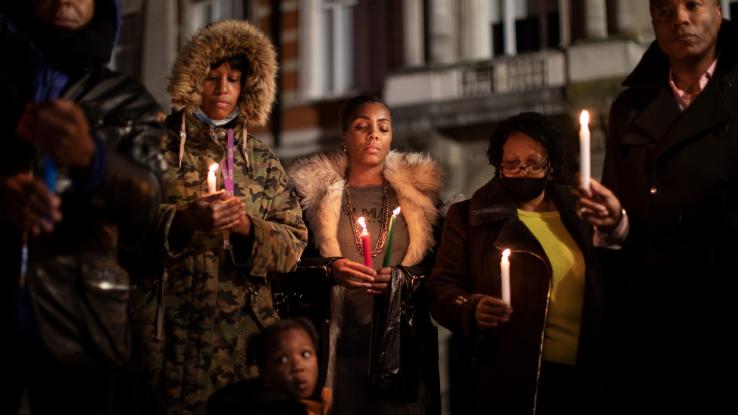
On October 14, 2020, a group gathered in London, England’s Brixton neighborhood to honor George Floyd with a candlelight vigil. October 14 marks what would have been Floyd’s 47th birthday had he not been murdered by police in May 2020. Since then, folks around the world have gathered in unprecedented numbers not just to honor Floyd’s memory, but also to show their support for standing against police brutality and dismantling white supremacy in all its iterations.
Now, a few months into 2021, the Black Lives Matter (BLM) movement has been nominated for the Nobel Peace Prize. Norwegian MP Petter Eide, who nominated the global movement, stated that, “BLM’s call for systemic change [has] spread around the world, forcing other countries to grapple with racism within their own societies.” In the wake of the nomination, the Black Lives Matter movement tweeted, “People are waking up to our global call: for racial justice and an end to economic injustice, environmental racism, and white supremacy. We’re only getting started.”
The Origins of the Black Lives Matter Movement
A decentralized political and social movement, Black Lives Matter was founded by Alicia Garza, Patrisse Cullors and Opal Tometi in order to “[advocate] for non-violent civil disobedience in protest against incidents of police brutality and all racially motivated violence against Black people.” Despite the incredible surge of support for Black Lives Matter in 2020, the movement has its origins in 2013. Eight years ago, the murder of 17-year-old Trayvon Martin was the spark that ignited the Black Lives Matter movement, and, just a year after that, the movement was brought to further national attention when 18-year-old Michael Brown was murdered by a police officer in Ferguson, Missouri.
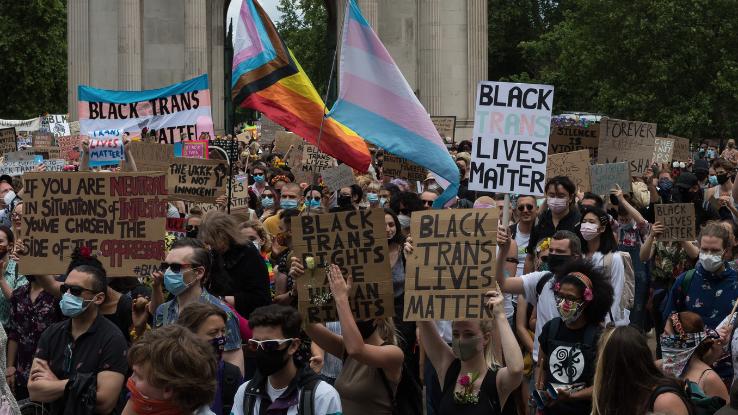
While support for the movement has steadily grown since then, the sheer number of protestors — and reach of the movement — climbed to new heights this year in the wake of George Floyd’s murder by Minneapolis, Minnesota-based police officers on May 25, 2020. According to The New York Times, the need to seek justice for Black folks, like George Floyd and Breonna Taylor, led “half a million people [to turn] out in nearly 550 places across the United States.” And that was on just one day — one day in a movement that has inspired protestors to keep showing up for the last several months.
In addition to garnering support and encouraging protests, the BLM network partnered with the Movement for Black Lives in order to fight for the Breathe Act, which is “a four-part federal proposal demanding that leaders redirect funds from law enforcement entities to community services” (via NBC News). Moreover, the Black Lives Matter Global Network Foundation announced a “$6.5 million fund to support grassroots organizing work” in June — and one of the movement’s co-founders, Garza, established Black Futures Lab, which “works with Black people to transform our communities, building Black political power and changing the way that power operates—locally, statewide, and nationally.”
What’s Contributing to the Sustained Support of the Movement?
For comparison, the 2017 Women’s March recorded between 3 and 5 million protestors on a single day. In speaking to the Times, Deva Woodly, an associate professor of politics at the New School in New York, noted that even the civil rights marches of the 1960s never swelled to such numbers, saying, “If we added up all those protests during that period, we’re talking about hundreds of thousands of people, but not millions.”
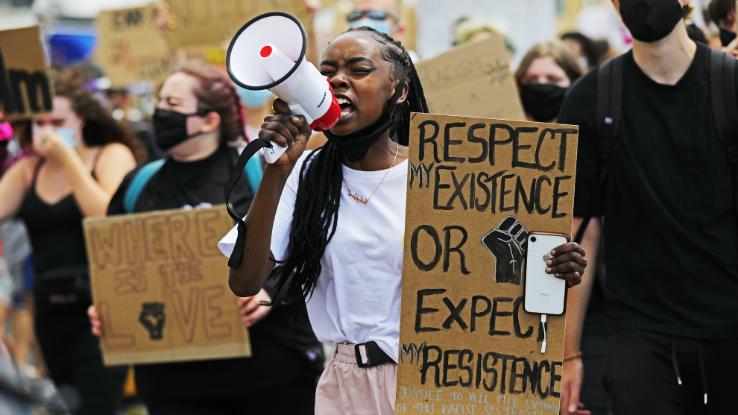
In fact, according to researcher Erica Chenoweth and the Crowd Sourcing Consortium, “15 million to 26 million people in the United States” alone have participated in protests since the deaths of George Floyd and Breonna Taylor, leading many to call the Black Lives Matter movement quite possibly the “largest movement in U.S. history.” For many folks, marching in a Black Lives Matter (BLM) protest marks their first foray into social justice. Writing for The Washington Post, Maneesh Arora found that “almost 4 out of 5 of these respondents reported that the recent protests were the first BLM protests they had ever attended.”
In an interview with Wired, Blackbird organizer Maurice Mitchell noted that Black Lives Matter is “decentralized but coordinated” — a key that’s essential to the movement’s global success. No historical social movement is a monolith; even though support for the Black Lives Matter movement has cropped up across the country — and across the globe — the organization isn’t directly involved in each protest instance. Instead, it provides organizers and activists with a framework, from tips and resources to signage.
That framework, combined with the fact that social media makes live, raw information and narratives more accessible (and, sometimes, visceral), has been a crucial development in getting both fledgling and long-standing activists alike to rally around the fight for justice. “Having the technology to where we’re able to actually create international conversation around how race affects each of us is something I’m very proud of,” T. Sheri Amour Dickerson, executive director and core organizer of BLM Oklahoma City, told NBC News. “This movement has really moved the needle.”
Support From Folks With Immense Platforms Has Helped Sustain the Movement
Without a doubt, the ongoing COVID-19 pandemic — and the U.S. government’s response to it — has informed protestors. For many, there are myriad frustrations surrounding the public health crisis, including staggering unemployment numbers; a lack of government support; an absence of accessible, affordable healthcare; the unprecedented closures of small businesses; and, of course, the fact that the novel coronavirus disproportionately impacts Black Americans. While the very real fear of contracting the novel coronavirus has led many to support the Black Lives Matter protests from home, the uncertainty caused by the pandemic, paired with the desire to see social and racial justice, has spurred many to take to the streets too.
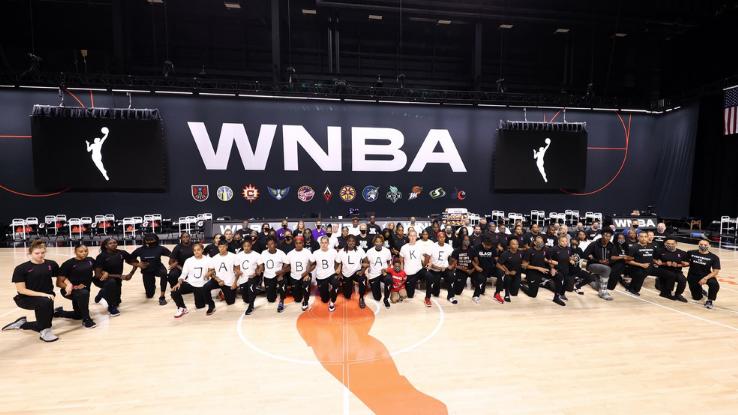
This same desire to take a stand has also driven folks with larger platforms to show solidarity with the Black Lives Matter movement. When professional sports slowly started to return over the summer, Nneka Ogwumike, forward for the Los Angeles Sparks and president of the Women’s National Basketball Players Association (WNBPA), told The New York Times that the season could act as a platform for spotlighting activism, saying, “We’ve always been the first in line to speak about social issues, and we see this as a really magical moment for us to turn the unexpected into something that could be very beautiful, with 144 voices in the same place.”
Without a doubt, the Women’s National Basketball Association (WNBA) helped lead the conversation, with whole teams walking off the court during the national anthem and players wearing Breonna Taylor’s name on their jerseys all season long. But the WNBA players weren’t the only ones using their privilege and platform to bring visibility to the movement: Whole National Women’s Soccer League (NWSL) teams wore black and knelt during the national anthem, National Basketball Association (NBA) players made a powerful unified statement by striking and tennis champ Naomi Osaka lent her voice to the movement before and during the U.S. Open.
Osaka (@naomiosaka) perhaps said it best when she tweeted, “[B]efore I am an athlete, I am a Black woman… I feel as though there are much more important matters at hand that need immediate attention, rather than watching me play tennis.” While celebrating athletes’ solidarity shouldn’t overshadow the movement itself, it seems clear that the wide reach of the Black Lives Matter movement, and its massive, visible support, has helped to sustain protests even months after police officers murdered Breonna Taylor and George Floyd.
Black Lives Matter Remains a Global Movement That Isn’t Losing Momentum
From near-constant protests in Minneapolis, which sparked another movement to defund the police and invest in community-led resources, to the Compton Cowboys riding in protests on horseback, folks across the country have shown solidarity. Even more astounding, perhaps, is the global reach of the BLM movement, with protests swelling in cities like Rotterdam, Tokyo, Paris, Berlin, Sydney and Bogota — just to name a few. Still need some perspective on just how enormous this movement is? Check out this map, which has recorded a staggering 4,446 cities or towns with protests since May (last updated by source on November 18, 2020).
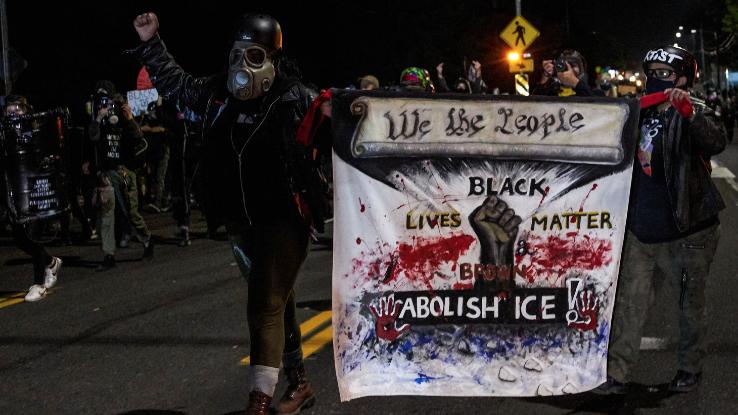
In the U.S., one of the cities making headlines quite consistently is Portland, Oregon, where protestors have been met with police violence and blanket arrests. Pictured above, demonstrators gathered on September 5, 2020, marking the 100th day and night of protests against racism and police brutality; police arrested dozens of folks and used tear gas liberally — all while wearing riot gear. When the 2020 presidential election loomed closer, the Trump administration sent federal agents into cities like Portland, inciting even more violence against protestors.
But in the face of that violence — and in the face of waning media coverage — the Portland protests, and so many others, have persisted. At the time of the election, the Portland’s protestors sustained an incredible 150 days of action. In the wake of President Joe Biden’s inauguration, the Rose City’s protestors have continued to speak out and show up, knowing that, even with the shift in power, there’s still so much work to be done. “I think more about sustainability than popularity,” Ariel Lipscomb, an organizer with BLM Denver, told NBC News. “And I know our work sustains itself because we adapt to the needs of our people.”






